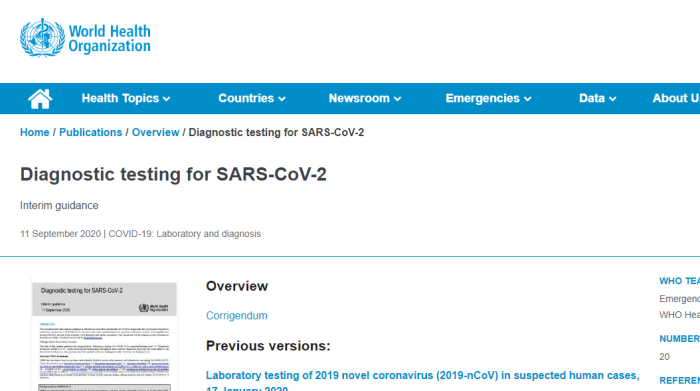
The PCR tests (polymerase chain reaction) are held up publicly as this gold standard for testing for infectious diseases. But what does the World Health Organization actually have to say about this?
1. Other Articles On CV “Planned-emic”
The rest of the series is here. Many lies, lobbying, conflicts of interest, and various globalist agendas operating behind the scenes, obscuring the vile agenda called the “Great Reset“. The Gates Foundation finances: the WHO, the US CDC, GAVI, ID2020, John Hopkins University, Imperial College London, the Pirbright Institute, the BBC, and individual pharmaceutical companies. Also: there is little to no science behind what our officials are doing; they promote degenerate behaviour; the Australian Department of Health admits the PCR tests don’t work; the US CDC admits testing is heavily flawed; and The International Health Regulations are legally binding. See here, here, and here. The media is paid off, and our democracy compromised, shown: here, here, here, and here.
2. Important Links
January 17, 2020 Testing Guidelines For WHO
March 19, 2020 Testing Guidelines For WHO
September 11, 2020 Testing Guidelines For WHO
September 11, 2020 WHO-2019-nCoV-Antigen_Detection
WHO: January, March, September 2020 Guidelines
WHO’s January 13, 2021 Posting On Test Guidelines
January 31 Global Surveillance For Human Infection
March 20 Global Surveillance For Human Infection
May 10 Global Surveillance For Human Infection
August 7 Global Surveillance For Human Infection
December 16 Global Surveillance For Human Infection
https://www.who.int/classifications/icd/Guidelines_Cause_of_Death_COVID-19.pdf
WHO Guidelines Classification Of Death
WHO Case Definition Guidelines
BCCDC: No Idea Actual Error Rate Of PCR Tests
BC COVID19_SerologyTestingGuidelines (1)
BC COVID19_InterpretingTesting_Results_NAT_PCR
Tricity: Bonnie Henry – False Positives Overwhelming Hospitals
CBC: Bonnie Henry Warning About False Negatives
WHO’s Definition Of “Herd Immunity”
WHO Posting On Herd Immunity Definition
WHO’s Other Definition Of Herd Immunity
Kary Mullis, Creator Of The PCR Test
3. BCPHO Bonnie Henry Getting Duper’s Delight
BC Provincial Health Officer Bonnie admits that Covid-19 testing is highly flawed and can have a 30% false negative rate. She also admits there’s no science behind her dictate that gatherings of 50 were allowed. Currently visitors and gatherings are prohibited.
That being said, it doesn’t mean this lunatic can’t enjoy a moment of fun now and again. It’s not like she destroyed B.C., or anything like that. The reality is that there is no science behind nearly everything that she’s been doing.
Bonnie is on record saying that she doesn’t support mass testing of asymptomatic people, since false positives could overwhelm hospitals. In other words, she’s fully aware that it doesn’t work.
4. BCCDC Record Shows 30% Error A Hoax
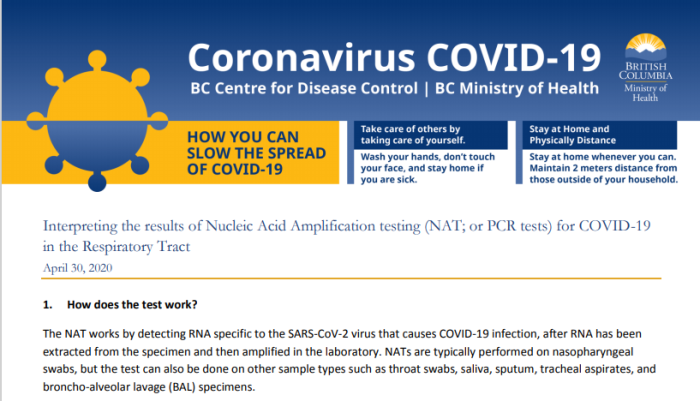
2. What do the test results mean?
Positive: Viral RNA is detected by NAT and this means that the patient is confirmed to have COVID-19 infection.
A positive NAT does not necessarily mean that a patient is infectious, as viral RNA can be shed in the respiratory tract for weeks but cultivatable (live) virus is typically not detected beyond 8 to 10 days after symptom onset.
Negative: Viral RNA is not detected in the sample. However, a negative test result does not totally rule out COVID-19 infection as there may be reasons beyond test performance that can result in a lack of RNA detection in patients with COVID-19 infection (false negatives; see below).
Indeterminate: The NAT result is outside the validated range of the test (i.e., RNA concentration is below the limit of detection, or a non-specific reaction), or this might occur when the sample collected is of poor quality
(i.e., does not contain a sufficient amount of human cells). Indeterminate results do not rule in or rule out
infection
5. What is the clinical sensitivity of the NAT test?
A statistic commonly quoted is that there is a 30% chance of a false negative result for a NAT test in a patient with COVID-19 infection (i.e., a 70% sensitivity). These and other similar estimates are based on a small number studies that compared the correlation between CT scan findings suggestive of COVID-19 infection to NAT on upper respiratory tract specimens. In these studies, 20-30% of people with a positive CT scan result had negative NAT results – and as discussed above a number of factors can contribute to false negative results. CT scan is not a gold standard for diagnosis of COVID-19 infection, and CT scan cannot differentiate amongst the many microbiological causes of pneumonia.
.
Ultimately, for COVID-19 testing, there is currently no gold standard, and the overall clinical sensitivity and specificity of NAT in patients with COVID-19 infection is unknown (i.e., how well NAT results correlate with clinical infection, “true positivity” or “true negativity” rate).
That comes from the BC CDC, the BC Centre for Disease Control. To summarize, the tests can’t tell for certain whether a person is positive or negative, regardless of the result.
Moreover, the Government can’t tell you what the error rates are either for false positives or false negatives, because they don’t know. When Bonnie Henry says 30%, she is quoting a statistic that is throw around for other viruses. A little transparency would be nice.
5. WHO’s January 17, 2020 Testing Guidance
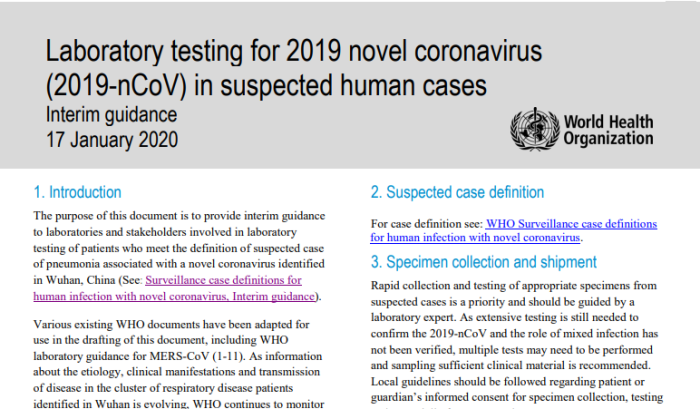
[Page 1]
3. Specimen collection and shipment Rapid collection and testing of appropriate specimens from suspected cases is a priority and should be guided by a laboratory expert. As extensive testing is still needed to confirm the 2019-nCoV and the role of mixed infection has not been verified, multiple tests may need to be performed and sampling sufficient clinical material is recommended. Local guidelines should be followed regarding patient or guardian’s informed consent for specimen collection, testing and potentially future research.
This is a warning sign. Multiple tests are recommended since a mixed infection cannot be ruled out. How reliable can the test be then>
6. WHO’s March 19, 2020 Testing Guidance
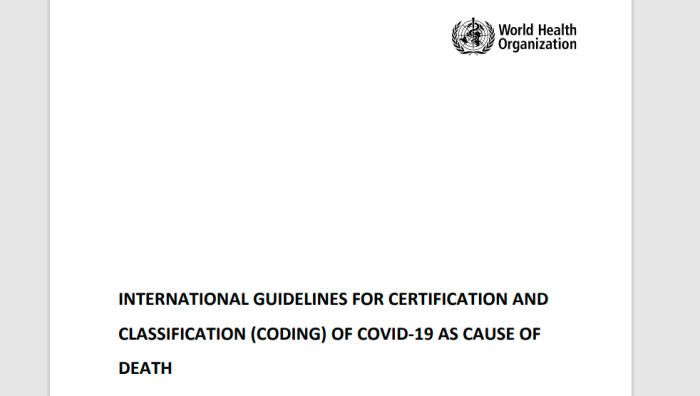
[Page 2/3]
Laboratory-confirmed case by NAAT in areas with established COVID-19 virus circulation.
In areas where COVID-19 virus is widely spread a simpler algorithm might be adopted in which, for example, screening by rRT-PCR of a single discriminatory target is considered sufficient.
One or more negative results do not rule out the possibility of COVID-19 virus infection. A number of factors could lead to a negative result in an infected individual, including:
poor quality of the specimen, containing little patient material (as a control, consider determining whether there is adequate human DNA in the sample
by including a human target in the PCR testing).
the specimen was collected late or very early in the infection.
the specimen was not handled and shipped appropriately.
technical reasons inherent in the test, e.g. virus mutation or PCR inhibition.
If a negative result is obtained from a patient with a high index of suspicion for COVID-19 virus infection, particularly when only upper respiratory tract specimens were collected, additional specimens, including from the lower respiratory tract if possible, should be collected and tested.
Each NAAT run should include both external and internal controls, and laboratories are encouraged to participate in external quality assessment schemes when they become available. It is also recommended to laboratories that order their own primers and probes to perform entry testing/validation on functionality and potential contaminants.
Even if a person tests negative, it doesn’t mean they are actually negative. Even if they test negative multiple times, it doesn’t mean they are cleared. These tests aren’t even screening for the virus, but rather, just a single marker. And of course, there is this little gem below, from the bottom of page 3.
Viral culture
Virus isolation is not recommended as a routine diagnostic procedure.
It’s not recommended to try to isolate the virus for the purposes of diagnosis. Just checking for a few (or even one) target is considered sufficient. And the test can’t be that reliable when it’s recommended to retest based on suspicion.
7. WHO’s September 11, 2020 Testing Guidance
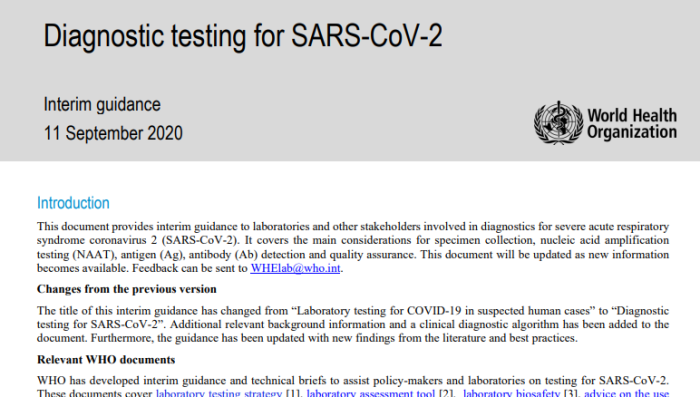
[Page 5]
Nucleic acid amplification test (NAAT)
Wherever possible, suspected active SARS-CoV-2 infections should be tested with NAAT, such as rRT-PCR. NAAT assays should target the SARS-CoV-2 genome. Since there is currently no known circulation of SARS-CoV-1 globally, a sarbecovirus-specific sequence is also a reasonable target. For commercial assays, interpretation of results should be done according to the instructions for use. Optimal diagnostics consist of a NAAT assay with at least two independent targets on the SARS-CoV-2 genome, however, in areas with widespread transmission of SARS-CoV-2, a simple algorithm might be adopted with one single discriminatory target. When using a one-target assay, it is recommended to have a strategy in place to monitor for mutations that might affect performance. For more details, see section below on “Background information on monitoring for mutations in primer and probe regions”.
[Page 6]
Careful interpretation of weak positive NAAT results is needed, as some of the assays have shown to produce false signals at high Ct values. When test results turn out to be invalid or questionable, the patient should be resampled and retested. If additional samples from the patient are not available, RNA should be re-extracted from the original samples and retested by highly experienced staff. Results can be confirmed by an alternative NAAT test or via virus sequencing if the viral load is sufficiently high. Laboratories are urged to seek reference laboratory confirmation of any unexpected results
[Page 7]
Rapid diagnostic tests that detect the presence of SARS-CoV-2 viral proteins (antigens) in respiratory tract specimens are being developed and commercialized. Most of these are lateral flow immunoassays (LFI), which are typically completed within 30 minutes. In contrast to NAATs, there is no amplification of the target that is detected, making antigen tests less sensitive. Additionally, false positive (indicating that a person is infected when they are not) results may occur if the antibodies on the test strip also recognize antigens of viruses other than SARS-CoV-2, such other human coronaviruses.
[Page 8]
Virus isolation is not recommended as a routine diagnostic procedure. All procedures involving viral isolation in cell culture require trained staff and BSL-3 facilities. A thorough risk assessment should be carried out when culturing specimens from potential SARSCoV-2 patients for other respiratory viruses because SARS-CoV-2 has been shown to grow on a variety of cell lines
Some points to take away from here: (a) still not testing for the virus, but for a single target; (b) false positives are still a significant problem; (c) antigen tests cannot distinguish between different viruses; and (d) virus isolation is still not recommended
8. WHO’s January 13, 2021 Testing Guidance
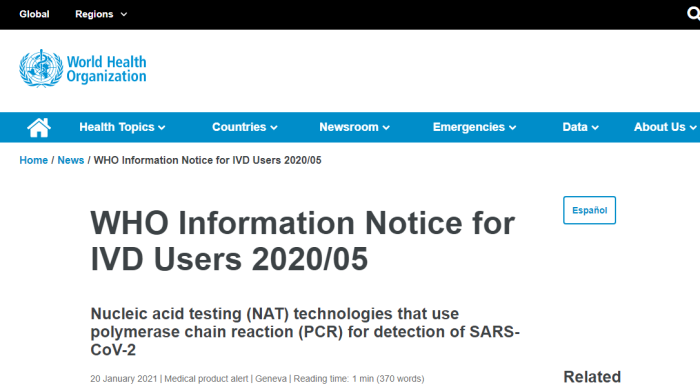
WHO guidance Diagnostic testing for SARS-CoV-2 states that careful interpretation of weak positive results is needed (1). The cycle threshold (Ct) needed to detect virus is inversely proportional to the patient’s viral load. Where test results do not correspond with the clinical presentation, a new specimen should be taken and retested using the same or different NAT technology.
WHO reminds IVD users that disease prevalence alters the predictive value of test results; as disease prevalence decreases, the risk of false positive increases (2). This means that the probability that a person who has a positive result (SARS-CoV-2 detected) is truly infected with SARS-CoV-2 decreases as prevalence decreases, irrespective of the claimed specificity.
Most PCR assays are indicated as an aid for diagnosis, therefore, health care providers must consider any result in combination with timing of sampling, specimen type, assay specifics, clinical observations, patient history, confirmed status of any contacts, and epidemiological information.
More guidance which give legitimate concerns that the tests themselves are completely bogus. If retesting is recommended so readily, what does it say about the reliability of the test? If test accuracy is dependent on community prevalence, what does it say about the test? If “patient history” must be confirmed, then what does it say about the test?
9. Barbara Yaffe: Mouthpiece For Ford/WHO
Interestingly, this research has answered an old question. Ontario Deputy Medical Officer Barbara Yaffe has been the butt of many jokes ever since she said that you can get 50% false positives when testing in an area where there isn’t very much Covid. It’s likely that she was simply parroting back one of WHO’s talking points, but wasn’t able to explain it in any sensible manner.
As for those vaccines that are already being rolled out in Canada, Yaffe admits they don’t know if they actually work. It’s a nice bait-and-switch, considering the public has been repeatedly told that testing was a success.
Then again, she just says whatever they write down for her, so there probably isn’t much thinking done at all on her part.
Not much different than Deborah Birx in the United States. If half of your cases are false positives, then there’s something seriously wrong with the test. There’s no good way to spin things.
10. Test’s Creator Denounces Infection Usage
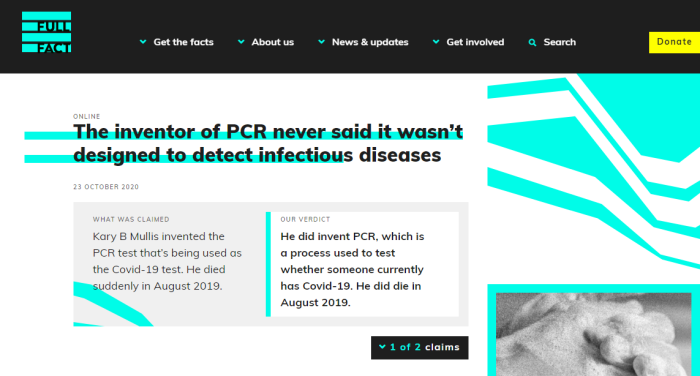
Kary Mullis, the creator of the PCR test, has stated publicly that it was never designed to test for active infection, and hence, is useless for that task. It makes sense, as such a setup wouldn’t be able to distinguish between dead genetic material, and something that was active.
11. WHO Redefines “Herd Immunity”
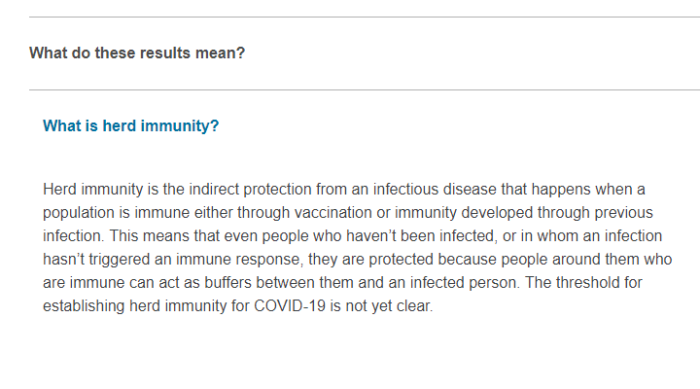
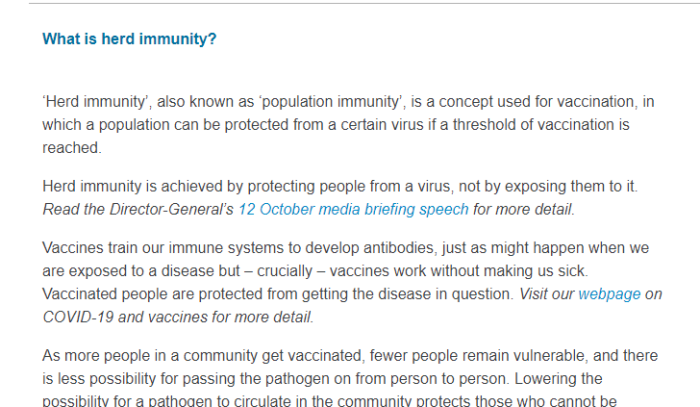
The World Health Organization was recently called out for changing the definition of “herd immunity”. Previously, it meant immunity from some vaccination, or previous infection. It was changed to only reflect the vaccination option. After the public caught on, however, it was restored to the original version.
Discover more from Canuck Law
Subscribe to get the latest posts sent to your email.
